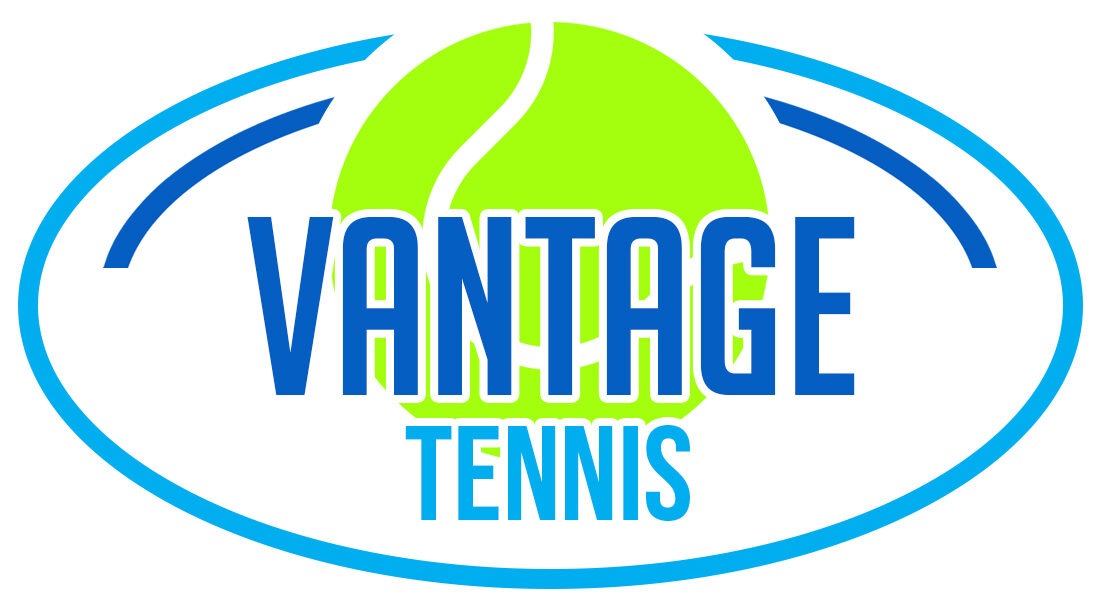If you’ve ever found yourself wondering about the difference between tennis and lawn tennis, you’re not alone. I used to think they were just two names for the same game. But the deeper I explored the sport, the clearer it became that while they share similarities, there are subtle (and not-so-subtle) distinctions between the two.
Whether you’re an avid player, a curious fan, or someone new to the game, it’s essential to understand these differences. Let’s unravel the mystery together and journey through courts, rackets, history, and gameplay.
Table of Contents for Difference Between Tennis and Lawn Tennis
The Origin and Core Difference Between Tennis and Lawn Tennis
he difference between tennis and lawn tennis lies first and foremost in history and playing conditions. Tennis, in its original form, often refers to what is now known as real tennis, royal tennis, or court tennis—a centuries-old game played indoors with unique rules and court structures. Lawn tennis, on the other hand, is the more modern, widely played version we see in tournaments like Wimbledon.
Real tennis is often viewed as the parent of modern tennis. It’s rich with tradition and played in a unique enclosed court. Lawn tennis, as you and I probably know it, is the globally recognized outdoor sport, governed by standardized lawn tennis rules and played on various surfaces, including grass, clay, and hard courts.
And when we talk about courts and lawn tennis, we’re referring to this accessible format seen in clubs and competitions worldwide. The term long tennis lawn is sometimes used to describe the traditional outdoor setting of the game, particularly when played on expansive grass courts, highlighting its origin and formal structure.
History and Evolution of Tennis
The Origins of Court Tennis
The game we now call real tennis—sometimes also known as court tennis in the US or royal tennis in Australia—dates back to medieval France. It was a sport of kings, played indoors in specially designed tennis courts, complete with sloping roofs and oddly shaped walls. These courts were far from the rectangular surfaces we see today.
In this version, players served the ball from specific positions, often using the walls to their advantage. I find it fascinating how strategy in real tennis differs so much from modern lawn tennis, relying on angles and court architecture more than brute force or baseline endurance.
The Birth of Lawn Tennis
Lawn tennis emerged in the late 19th century in England as a simplified, outdoor version of real tennis. It was designed to be played on grass—hence the term lawn. Over time, lawn tennis players grew in numbers and the sport quickly became a favourite pastime, leading to the establishment of tennis courts and lawn clubs across Europe and the world.
It was played on a standard rectangular lawn tennis court, which became the blueprint for modern tennis courts. Eventually, the “lawn” was dropped from common usage, and the sport became known globally simply as tennis.
Gameplay and Rules Compared
Court Design: Real vs Lawn Tennis
When comparing the difference between tennis and lawn tennis, court design is a key distinction.
Court tennis is played indoors on a unique court, with walls, sloped surfaces (called penthouses), and even openings called galleries. These unusual features play a major role in gameplay and strategy.
In contrast, a lawn tennis ground follows a more predictable layout: a flat, open tennis court with well-marked lines for singles and doubles play. You won’t find walls or galleries here; it’s all about precision, speed, and endurance. The court of lawn tennis has become the standard across the world of professional tennis.
Equipment and Balls
In real tennis, the balls are handmade and less bouncy, and the rackets are asymmetrical to help reach balls near walls. The lawn tennis ball, on the other hand, is made of rubber and covered in felt, designed to bounce uniformly on the court surface. Whether I’m playing on grass, clay, or hardcourt, I always notice how the lawn tennis ball responds differently to each.
Serving and Scoring
In both games, the serve starts the rally, but real tennis allows serves off the wall, making it unpredictable. Meanwhile, lawn tennis rules are more straightforward. You and I follow the familiar 15-30-40-game format. The service must land in the diagonally opposite service box, and there are clear boundaries for singles and doubles play.
Understanding Tennis Courts: Surfaces and Styles
Types of Tennis Courts
There are several types of courts, and each brings a different challenge. When I first played on clay, I was surprised at how much it slowed down the ball. Let’s look at the main surfaces:
Grass Courts (Lawn Tennis Courts)
These are traditional lawn tennis courts like those at Wimbledon. They’re fast and favour players with a strong serve. I find them tricky due to the unpredictable bounces, but they’re beautiful to play on.
Clay Courts
Popular in Europe and South America, clay slows down the balls and produces higher bounces. It’s ideal for long rallies and strategic play.
Hard Courts
These are the most common tennis courts worldwide. They offer a consistent bounce and are great for all-around players.
Carpet and Indoor Courts
You’ll find these in some clubs and indoor facilities. They’re similar to hard courts but usually faster. While they aren’t used in major tournaments anymore, they’re still fun to play on.
Tennis Professionals and the Modern Game
Lawn Tennis and Global Recognition
Today, when people mention tennis professionals, they’re almost always referring to players of lawn tennis. Athletes like Roger Federer, Serena Williams, and Rafael Nadal have taken the sport to new heights on various types of courts. They travel the world, competing on every surface, showcasing the best of modern tennis.
The Role of Real Tennis Today
While real tennis has a much smaller following, it remains active, especially in the UK, US, and Australia. Enthusiasts of the original court game see it as a noble pursuit. I’ve watched a few matches, and I have to say, the skill level required is extraordinary.
Personal Reflections and What You Should Try
My Experience Playing Both Forms
I’ve had the privilege of playing both real tennis and lawn tennis, and the difference between tennis and lawn tennis couldn’t be clearer. Real tennis felt like chess in motion—every shot required thought, placement, and strategy. Lawn tennis, on the other hand, gives you that open court freedom, where you can run, rally, and power your shots across the court of lawn tennis.
When you step onto a lawn tennis ground, whether it’s grass, clay or hard, you feel the energy of the modern game. When I first held a racket on a lawn tennis court, I felt instantly connected to the players around the globe who have made tennis the international game it is today.
Why You Should Give Both a Go
Lawn tennis is more accessible—you’ll find tennis courts in nearly every town. If you’re starting out, this is the place to begin. Grab a lawn tennis ball, learn the basic lawn tennis rules, and hit the court with a friend. You’ll improve your reflexes, fitness, and strategy.
If you’re feeling adventurous, look up a real tennis or royal tennis court near you. They’re rare, but the experience is worth it. Playing there, you’ll feel like a part of history, standing where kings and queens once stood.
Quick Summary: Key Differences
| Feature | Real Tennis (Court Tennis) | Lawn Tennis |
| Court | Enclosed with walls, galleries | Open rectangular lawn tennis court |
| Ball | Handmade, low bounce | Standardised lawn tennis ball |
| Serve | Can bounce off walls | Must land in service box |
| Equipment | Asymmetrical racket | Symmetrical racket |
| Played | Mainly indoors | Indoors and outdoors |
| Popularity | Niche | Global |
More about Tennis and Lawn Tennis
Is Tennis the Same as Lawn Tennis?
No, tennis and lawn tennis are not exactly the same—though people often use the terms interchangeably. When I first started playing, I used to think they were the same too. But as you get into the world of tennis, you’ll notice that lawn tennis is actually the modern version of the original game, often just called “tennis” today.
Real tennis (sometimes known as royal tennis or court tennis) is the older, indoor version that has different rules, equipment, and even court design. So if you’re just heading to a local tennis court or watching Wimbledon, you’re really talking about lawn tennis.
Is It Called Long Tennis or Lawn Tennis?
It’s definitely called lawn tennis, not long tennis. I’ve heard people mix this up before, and I get it—the words sound kind of similar, especially when said quickly. But the correct term is lawn tennis because the sport was originally played on grass—hence “lawn.”
Even though today you’ll find many tennis courts like clay, hard, and synthetic, the name lawn tennis stuck. So if you’re searching for the right term, you and I can both agree it’s lawn tennis, not long tennis.
What Are the Four Types of Tennis?
There are four main types of tennis that you might come across, and I’ve tried at least a couple of them myself:
- Lawn Tennis – This is what you and I usually refer to as “tennis,” played on various tennis courts like hard, clay, or grass surfaces.
- Real Tennis – Also known as court tennis or royal tennis, this is the original indoor version of the sport, still played in select places with very different rules and equipment.
- Table Tennis – A miniature version of the sport, also known as ping pong. I love how fast-paced it is!
- Beach Tennis – A fun and growing sport that’s played on sand using paddles and a net.
Whether you’re playing on a lawn tennis ground, a beach, or a table, each version has its own charm. You can try them all and see which one suits your style best.
What Is the Difference Between Tennis, Lawn Tennis, and Table Tennis?
Great question—and one I had myself when I started exploring the sport more deeply. Here’s how I’d explain it:
- Tennis vs Lawn Tennis: Honestly, when you and I talk about tennis today, we usually mean lawn tennis. It’s the most common form, played on modern tennis courts whether they’re hard, grass, or clay. So while “tennis” is the general term, “lawn tennis” is the specific game that’s played in the modern world.
- Real Tennis: This is the ancestor of lawn tennis and is also called court tennis or royal tennis. It’s played indoors with asymmetrical courts and different rules. I find it fascinating but definitely more complex.
- Table Tennis: A completely different game, though it shares some similarities. It’s played on a table, using small paddles and a lightweight ball. When I play this with friends, the pace and quick reflexes make it feel like a different world from outdoor tennis.
So, the difference between tennis and lawn tennis mostly comes down to historical versus modern terms, while table tennis is a totally separate game you and I can enjoy indoors.
Final Thoughts: What’s in a Name?
The difference between tennis and lawn tennis may appear trivial at first glance, but once you dive in, it opens up a world of tradition, variety, and passion. Whether you’re drawn to the strategic elegance of real tennis or the athletic brilliance of modern lawn tennis, both offer something special.
You don’t need to be one of the top tennis professionals to enjoy the game. Whether you’re playing in a public park, joining a local club, or dreaming of Centre Court at Wimbledon, what matters most is the joy of the play—the rally, the serve, the chase of the ball on the line.
Next time someone asks you about the difference between tennis and lawn tennis, you’ll not only have the answer—you’ll have a story, a memory, and maybe even a few sore muscles to go along with it.
Now, it’s your turn. Pick up your racket, find a lawn tennis ground or a historic court, and experience both sides of this fascinating sport.
Pin this!
Related Reading for Difference Between Tennis and Lawn
- 7 Best Tennis Apps for Learning (+ My Own App!)
- Mental Training For Tennis: 4 Tips to Focus Like A Pro
- How to Do a Backhand Tennis: 4 Key Steps to Master the Shot
- 10 Tennis Recovery Stretches: Your Secret Weapon for Better Performance and Less Pain
- 8 Powerful Tennis Basics for Beginners: Play with Confidence
- How to Do a Backhand Tennis: 4 Key Steps to Master the Shot
- What to Wear When Playing Tennis: 5 Ultimate Style and Comfort Tips









